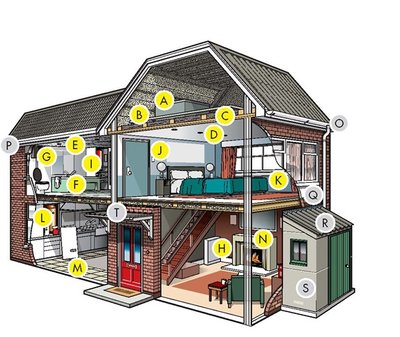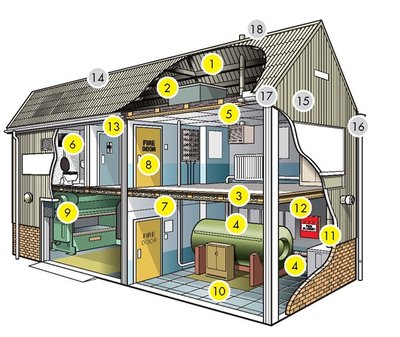Asbestos was a widely used material within commercial buildings, homes and machinery until 1999, when it was banned. This means that asbestos is common in the general environment. However, working directly with asbestos-containing materials (ACMs) can give personal exposures to airborne asbestos that are much higher than normal environmental levels. Repeated occupational exposures can give rise to a substantial cumulative exposure over time. This will increase the risk of developing an asbestos-related disease in the future.
Exposure to asbestos can cause four main diseases:
- Mesothelioma (a cancer of the lining of the lungs; it is always fatal and is almost exclusively caused by exposure to asbestos)
- Asbestos-related lung cancer (which is almost always fatal)
- Asbestosis (a scarring of the lungs which is not always fatal but can be a very debilitating disease, greatly affecting quality of life)
- Diffuse pleural thickening (a thickening of the membrane surrounding the lungs which can restrict lung expansion leading to breathlessness.)
You can get further information on these diseases from our About Asbestos page.
Younger people, if routinely exposed to asbestos fibres over time, are at greater risk of developing asbestos-related disease than older workers. This is due to the time it takes for the body to develop symptoms after exposure to asbestos (latency).
It can take anywhere between 15-60 years for any symptoms to develop after exposure, so these diseases will not affect you immediately but may do later in life. You need to start protecting yourself against any exposure to asbestos now because the effect is cumulative.
Am I at risk?
Workers involved in refurbishment, maintenance and other similar trades, could be at risk of exposure to asbestos during their work. This includes:
Heating and ventilation engineers, Demolition workers, Carpenters and joiners, Plumbers, Roofing contractors, Painters and decorators, Plasterers, Construction workers, Fire and burglar alarm, Installers, Shop fitters, Gas fitters, Computer and data installers, General maintenance staff eg caretakers, Telecommunications engineers, Architects, building surveyors, and other such professionals, Cable layers, Electricians.
This list does not include all occupations at risk from potential exposure to asbestos.
When am I most at risk?
You are most at risk when:
- the building you are working on was built before the year 2000
- you are working on an unfamiliar site
- asbestos-containing materials were not identified before the job was started
- asbestos-containing materials were identified but this information was not passed on by the people in charge to the people doing the work
- you haven’t done a risk assessment
- you don't know how to recognise and work safely with asbestos
- you have not had appropriate information, instruction and training
- you know how to work safely with asbestos, but you choose to put yourself at risk by not following proper precautions, perhaps to save time or because no one else is following proper procedures
Where might asbestos be found?
To view places you may find asbestos see where is asbestos found?
Training - Legal Requirement
In accordance the Control of Asbestos Regulations, Regulation 10, it is a legal requirement that anyone liable to disturb asbestos must have received the correct level of training:
"This regulation requires employers to make sure that anyone liable to disturb asbestos during their work, or who supervises such employees, receives the correct level of information, instruction and training to enable them to carry out their work safely and competently and without risk to themselves or others."
Information, instruction and training for asbestos awareness is intended to give workers and supervisors the information they need to avoid work that may disturb asbestos during any normal work which could disturb the fabric of a building, or other item which might contain asbestos. It will not prepare workers, or self-employed contractors, to carry out work with asbestos-containing materials. If a worker is planning to carry out work that will disturb ACMs, further information, instruction and training will be needed.
Workers who plan to carry out work that will disturb asbestos require a higher level of information, instruction and training, in addition to asbestos awareness. This should take account of whether the work is non-licensed; notifiable non-licensed work (NNLW); or licensed work and should be job specific.



